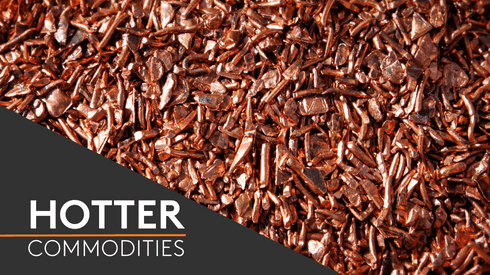The three-month copper price fell by over $200 at the end of last week but is trading back above $6,700 per tonne this morning as stocks continue to fall.
Nickel prices were among the worst affected on Friday, falling by 5.6%. The metal was last trading $75 higher as it looks to regain some ground.
“Friday’s corrections in the LME metals prices were to some extent expected and overdue as it has recently felt like prices had run ahead of the fundamentals. With no missile launches from North Korea over the weekend the markets seem to be breathing a sigh of relief and the corrections have paused. Whether the pause continues to attract dip buying remains to be seen,” Metal Bulletin senior analyst William Adams said.
Lead prices also edged higher despite 11,100 tonnes of stock being re-warranted, with the majority in Busan and Rotterdam. This follows a large re-warranting last week.
Aluminium prices have been little changed recently and edged up higher this morning as prices continue to hold up well.
“It might be useful to focus on the fact that while there has been possibly an overreaction to potential rather than actual news, nothing has changed physically in the world of metals in the last 72 hours and before this collapse the world at large was very bullish for metals prices,” Malcom Freeman of Kingdom Futures said in a note.
Copper recovers
- The three-month copper price rose $62 to $6,755 per tonne.
- Copper’s recovery was capped slightly by news of softer-than-expected import data from China.
- “[China’s] imports of copper products in August hit 390,000 [tonnes]. While this was up 11.5% year on year, the fact it was unchanged for a third month seemed to disappoint the market,” ANZ Research said.
- “China’s power and infrastructure sectors, which account for approximately 4 6% and 9 .4% of copper end-use, respectively, will keep demand growth elevated in the largest consumer of refined copper. Additionally, over the longer term, rising electric vehicle production and renewable energy systems will bolster copper demand,” BMI Research said.
- In supply-side news, copper miners in Chile are increasingly optimistic about industry prospects for the mid-to-long term but have said that caution, especially towards costs and investments, is still needed.
- Copper stocks fell a net 4,750 tonnes to 208,425 tonnes.
Other base metals prices
- The three-month aluminium price was up $34.50 to $2,133.50 per tonne. Stocks dipped 1,450 tonnes to 1,320,050 tonnes.
- Nickel’s three-month price was up $75 to $11,655 per tonne. Inventories declined 2,100 tonnes to 382,878 tonnes.
- The three-month zinc price increased $72 to $3,103 per tonne. Stocks declined 1,375 tonnes to 340,425 tonnes.
- Lead’s three-month price was up $28 to $2,293 per tonne. Inventories dipped 350 tonnes to 164,025 tonnes.
- The three-month tin price rose by $235 to $20,785 per tonne. Stocks dipped 20 tonnes to 1,895 tonnes.
Currency moves and data releases
- The dollar index remains week despite climbing 0.14% to 91.47.
- In other commodities, the Brent crude oil spot price was down 0.10% to $53.66 per barrel.
- Data out already today showed Japan’s core machinery orders climb 8%, better than the 4.2% rise expected; M2 money supply climbed 4%; tertiary industry orders climbed 0.1%; and preliminary machine tool orders climbed 36%.
- It is a quiet start to the week with little major data releases on the calendar, but the USA’s inflation reading for August and Chinese industrial production data will be out later this week.




